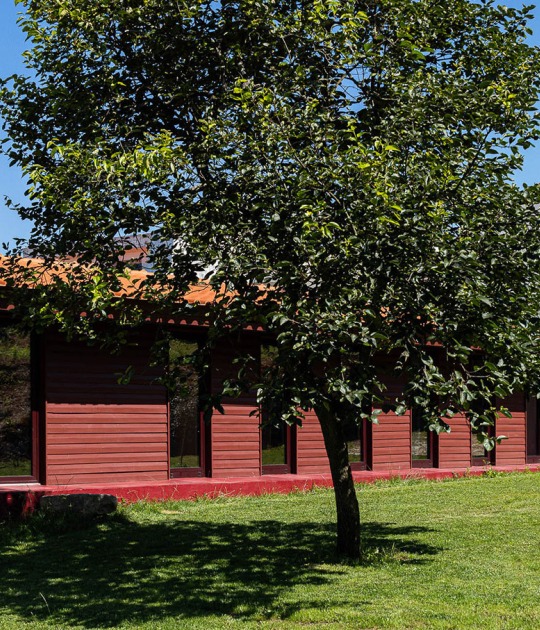Memory of project Max Dudler
Heidelberg Castle ranks as one of the most important Renaissance buildings north of the Alps. Having been partially destroyed during the Thirty Years’ War, and on many occasions since, the castle was abandoned altogether in the eighteenth century. Today the famous ruin serves as a museum. The purpose of the visitor centre is to familiarize guests with the castle before they proceed to the castle proper.
In May 2009, Max Dudler’s design prevailed in the architectural selection procedure. The visitor centre’s foundation stone was laid in summer 2010, making it the first new building to be constructed at Heidelberg Castle for more than four hundred years. This building shows how the contemporary architecture of Max Dudler is rooted in history. At the same time, its abstract form underscores both the grandeur and actuality of this German cultural monument.
The new building is situated outside the old defensive ring wall, at the entrance gate to the castle and garden (Hortus Palatinus).
In architectural terms, the building blends in with the surrounding historical fortifications through its re-interpretation of elements of the existing site’s architecture. The window embrasures, for example, are set more than two metres into its walls, echoing the large-sized apertures that can be seen in the neighbouring saddle store. The windows of the visitor centre are positioned according to the building’s interior requirements and also offer visitors new visual relationships with the entry building and garden outside.
To build the façade, local Neckar Valley sandstone has been machine-cut to form a monolithic wall of roughly-cut blocks with joins that are barely visible. This masonry detailing is a contemporary re-interpretation of the historical wall.
Unlike the heavy relief of the building’s exterior, the surfaces of its interior are smooth. The large window panes are fitted flush with the white plastered walls and the floor consists of a light blue polished terrazzo.
Ensuring a smooth flow of large numbers of visitors was a particular challenge posed by the architectural brief. Dudler’s design solves this with its ingenious ‘architectural promenade’ through the building: visitors proceed from the entry hall through to the educational room, then up onto the roof terrace with its elevated views of the castle before exiting via the exterior stairs at the rear of the building to begin a tour of the castle proper.
Heidelberg Castle's new visitor centre, designed by Max Dudler, fits perfectly into its surroundings. The walls are built with the same Neckar sandstone that was used in the existing buildings, in a re-interpretation of the old walls.
The centre creates a new promenade that allows visitors to get to know the history of the place before actually entering the castle.
The centre creates a new promenade that allows visitors to get to know the history of the place before actually entering the castle.
More information
Published on:
December 4, 2013
Cite:
"Heidelberg Castle's Visitor Centre by Max Dudler" METALOCUS.
Accessed
<https://www.metalocus.es/en/news/heidelberg-castles-visitor-centre-max-dudler>
ISSN 1139-6415
Loading content ...
Loading content ...
Loading content ...
Loading content ...
Loading content ...
Loading content ...
Loading content ...
Loading content ...
Loading content ...
Loading content ...
Loading content ...
Loading content ...
Loading content ...
Loading content ...
Loading content ...
Loading content ...
Loading content ...
Loading content ...
Loading content ...
Loading content ...
Loading content ...
Loading content ...
Loading content ...
Loading content ...
Loading content ...
Loading content ...
Loading content ...
Loading content ...
Loading content ...
Loading content ...
Loading content ...
Loading content ...
Loading content ...
Loading content ...
Loading content ...
Loading content ...
Loading content ...
Loading content ...
Loading content ...
Loading content ...
Loading content ...
Loading content ...
Loading content ...
Loading content ...
Loading content ...
Loading content ...
Loading content ...
Loading content ...
Loading content ...
Loading content ...
Loading content ...
Loading content ...
Loading content ...
Loading content ...





































